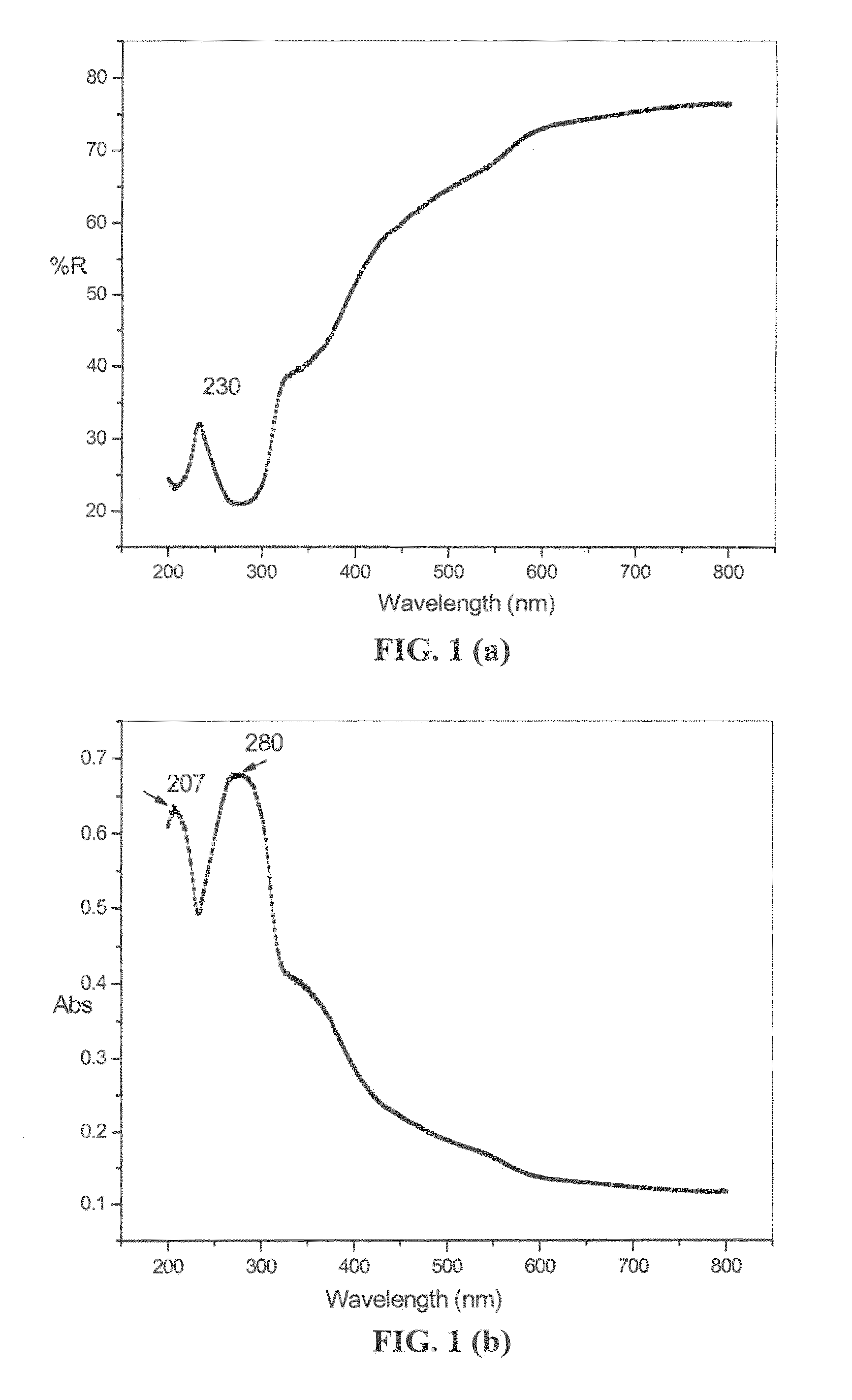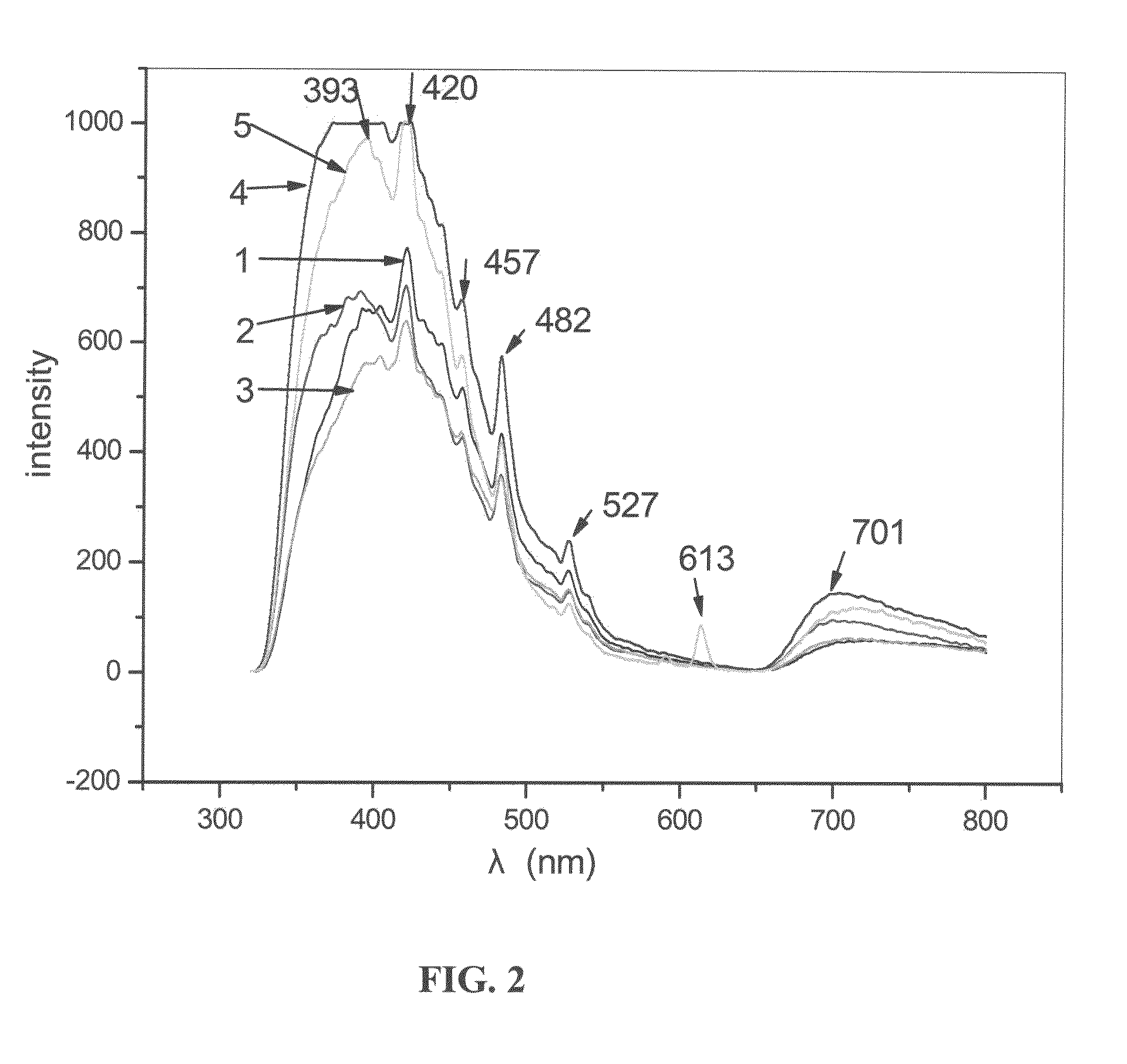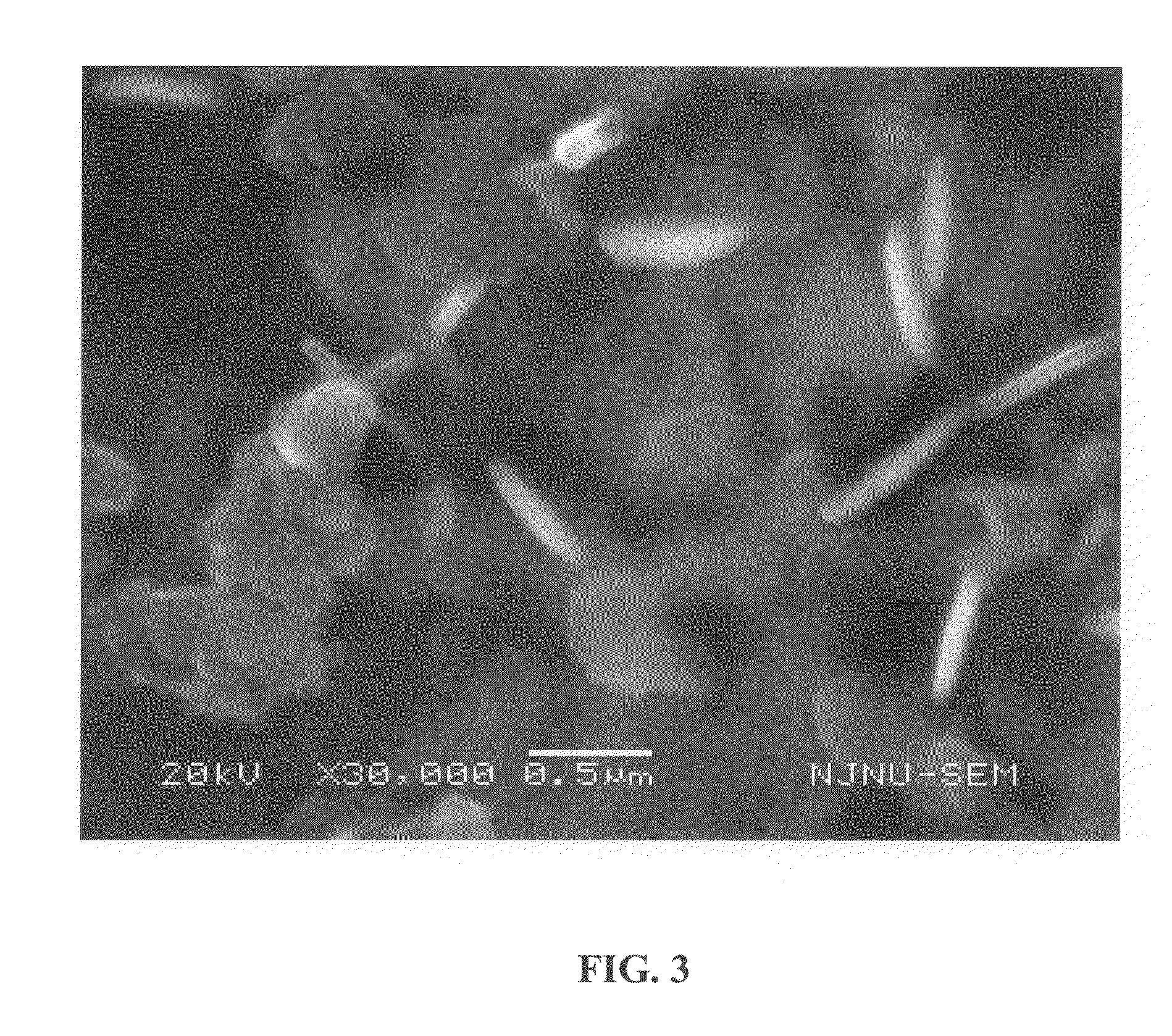Multi-functional nanocomposite additive compositions and methods for making and using same
a nanocomposite additive and multi-functional technology, applied in the field of nanocomposite additives with multi-functionality, can solve the problems of reducing the lifetime affecting the application of silicone emulsion coatings, and being easily damaged or eroded, so as to reduce the cost of coating manufacture, improve the physical and mechanical properties, and simplify the production process
- Summary
- Abstract
- Description
- Claims
- Application Information
AI Technical Summary
Benefits of technology
Problems solved by technology
Method used
Image
Examples
example 1
[0055]Mixed La0.9Sm0.09Eu0.01 Cl3, 1-Naphthoic acid, dodecyltrimethylammonium chloride and 4,4′-(1,6-hexamethylenedioxydicarbonyl)bis(1-dodecylpyridinium bromide) by molar ratio 1:4:1.8: 0.2, and then reacted in media for 6 hours at 20˜40° C., obtained a novel complex. After all, 0.5 part the above complex and 0.6 part of organic clay which has a cationic exchange capacity of 80 meq / 100 g were dispersed in 20 parts water under high speed agitation to form a homogeneous material. The homogeneous material was then reacted for 3˜4 hours between 20˜200° C. The final product was subsequently washed, dried and crashed into powder, which was the MFNA.
[0056]Disperse 0.0005 part of the above MFNA into 0.005 part n-Butanol under vigorous stirring. The above dispersion was added into 100 parts of acrylic emulsion and dispersed for 3 hours under vigorous stirring and was ready for use thereafter.
example 2
[0057]Mixed La0.7 Gd0.1Eu0.2 NO3, Methyl benzoate, Cetyltrimethyl ammonium chloride and 4,4′-(1,6-hexamethylenedioxydicarbonyl)bis(1-hexadecylpyridinium chloride) by molar ratio 1:5:0.1:0.9, and then reacted in media for 4 hours at 40˜60° C., obtained a novel complex. After all, 1 part the above complex and 10 part of organic clay which has a cationic exchange capacity of 90 meq / 100 g were dispersed in 100 parts ethanol under high speed agitation to form a homogeneous material. The homogeneous material was then reacted for 3˜5 hours between 60˜70° C. The final product was subsequently washed, dried and crashed into powder, which was the MFNA.
[0058]Disperse 5 parts of the above MFNA into 50 parts 1,2-propanediol under vigorous stirring. The above dispersion was added into 100 parts 50% polyvinyl acetate emulsion and dispersed for 6 hours under vigorous stirring and was ready for use thereafter.
example 3
[0059]Mixed Ce0.4Y0.2Eu0.4Cl3, β-naphthoic acid, Octadecyl trimethyl ammonium chloride and 4,4′-(1,6-hexamethylenedioxydicarbonyl)bis(1-octadecylpyridinium bromide) by molar ratio 1:8:0.4:1.6, and then reacted in media for 3 hours at 150˜200° C., obtained a novel complex. After all, 6 parts the above complex and 7 parts organic clay which has a cationic exchange capacity of 80 meq / 100 g were dispersed in 200 parts ethanol under high speed agitation to form a homogeneous material. The homogeneous material was then reacted for 4 hours between 80˜100° C. The final product was subsequently washed, dried and crashed into powder, which was the MFNA.
[0060]Disperse 4 parts of the above MFNA into 40 parts 1-butanol / propylene glycol methyl ether under vigorous stirring. The above dispersion was added into 100 parts 50% silicone emulsion and dispersed for 4 hours under vigorous stirring and was ready for use thereafter.
PUM
| Property | Measurement | Unit |
|---|---|---|
| Temperature | aaaaa | aaaaa |
| Fraction | aaaaa | aaaaa |
| Fraction | aaaaa | aaaaa |
Abstract
Description
Claims
Application Information
 Login to View More
Login to View More - R&D
- Intellectual Property
- Life Sciences
- Materials
- Tech Scout
- Unparalleled Data Quality
- Higher Quality Content
- 60% Fewer Hallucinations
Browse by: Latest US Patents, China's latest patents, Technical Efficacy Thesaurus, Application Domain, Technology Topic, Popular Technical Reports.
© 2025 PatSnap. All rights reserved.Legal|Privacy policy|Modern Slavery Act Transparency Statement|Sitemap|About US| Contact US: help@patsnap.com



